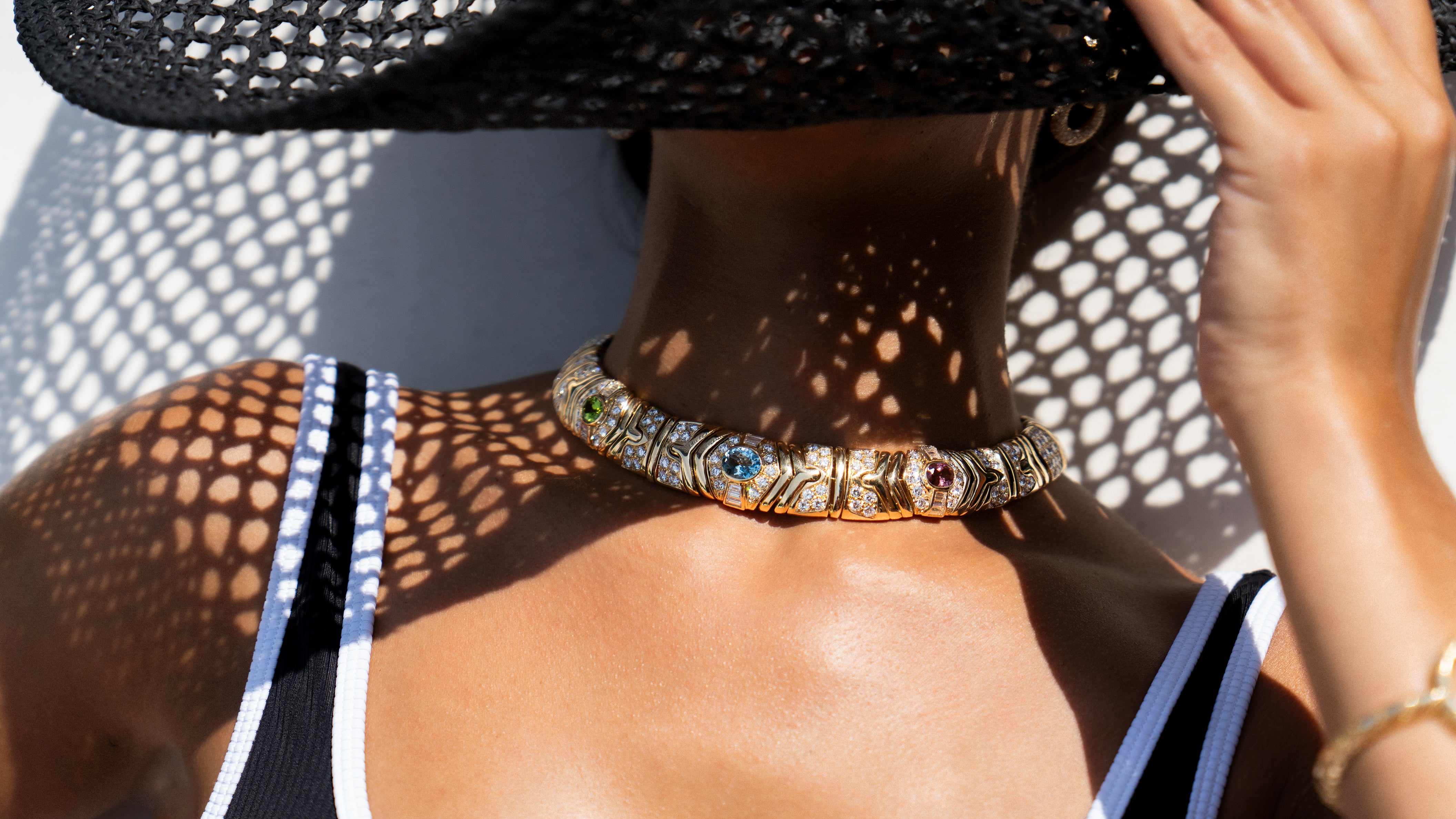Sloan & Company
Jewelry Production in Newark, New Jersey
In the Nineteenth Century, Newark was home to several burgeoning jewelry manufacturers.
Large-scale jewelry manufacturing began in America in the 1840s. By 1867, there were 30 factories in play in Newark, and by 1872, they were producing jewelry valued at the time at $5 million. By 1929, at the peak of the jewelry production period, Newark jewelers produced 90% of America’s 14K gold jewelry and 50% of its 18K gold jewelry.
1872 was the year of the Newark Industrial Exhibition, an opportunity for jewelers to display their designs to the public. Among the firms invited to participate were Carter, Sloan & Company. In 1878, the firm became the largest jewelry factory in the world, with an annual production of $2 million.
The Sloans
As was the case in the early days of American manufacturing, small jewelry shops gradually expanded into partnerships. As these partnerships shifted, the companies changed names frequently to add or remove a partner who had moved on. Augustus Sloan, who spent 60 of his years in the jewelry industry, lent his name to several iterations of firms, until he and his son, Frank T. Sloan, joined forces in 1896, becoming Sloan & Co. That same year, an office of Sloan & Co. opened at 15 Maiden Lane in New York City. Maiden Lane was home to many esteemed jewelers at the turn of the 20th Century.
Augustus Kellogg Sloan was born in 1838 in Cleveland, Ohio, moving to Syracuse, New York, in his fifth year. After serving as an office boy and an accountant for various enterprises, Sloan, in 1867, became a partner in the firm of Carter, Howkins & Dodd, which eventually became Carter, Sloan & Co. He enjoyed a long and prosperous career, becoming an esteemed member of the jewelry community and serving in many capacities. One of these was President of the Jewelers’ Security Alliance. Sloan was always a proponent of honest jewelry stamping legislation. (Gold jewelry didn’t always have the karat amount stamped on the inside, and not everyone was truthful about disclosing the karat gold content.) In 1904, he helped put through the National Stamping Law and headed the United States Stamping Law Committee, which was in charge of drafting state laws to conform to the National Stamping Act. Augustus Sloan was mourned by the jewelry industry when he passed away in 1922.
Frank T. Sloan was born in Brooklyn, New York, in 1870. Upon his father’s death in 1922, he became President of Sloan & Company. Like his father, Frank was an esteemed part of the community and a member of a number of industry associations, including the Twenty-Four Karat Club and the Jewelers Protective Union. He led the Company until his death in 1940.
Sloan & Company Style
Easily identified by the trident symbol that appeared on the back of its jewelry, Sloan & Company was famous for its jewelry designs that were like miniature works of art, featuring plenty of detail and liberal use of enamel. Many of their earlier designs employed repoussé, a process where imagery was raised from the reverse side of the piece. While some jewelry styles used diamonds or semi-precious gemstones, many were simply yet elegantly created in gold, with the color supplied by the intricate enamel work.
Sloan produced a variety of every day and ornamental pieces in gold chains, bracelets, pendants, brooches, cuff links and other accessories set in polished or colored gold.
In its heyday, Sloan produced an impressive assortment of Art Nouveau and Edwardian era pieces that catered to the café society. The firm supplied high-quality jewelry designs to prominent jewelers across the country, including Cartier and Tiffany.
Notables
- Sloan & Company produced a collection of charms that were whimsical and exquisitely detailed. Depicted were objects as diverse as a mousetrap, cash register, piano, and carousel. The craftsmanship of these petit treasures was joyful and timeless.
- Sloan created a pair of brooches, each one featuring a hunting horn, one with the quarry at the center (a fox), the other with the pursuer (a horse), fashioned in gold with enamel detailing.
- Terrier dogs frequently appeared in Art Deco jewelry, and Sloan had its own version of the faithful pooch, crafted of 14K gold covered in split pearls, complete with a red enamel collar.
